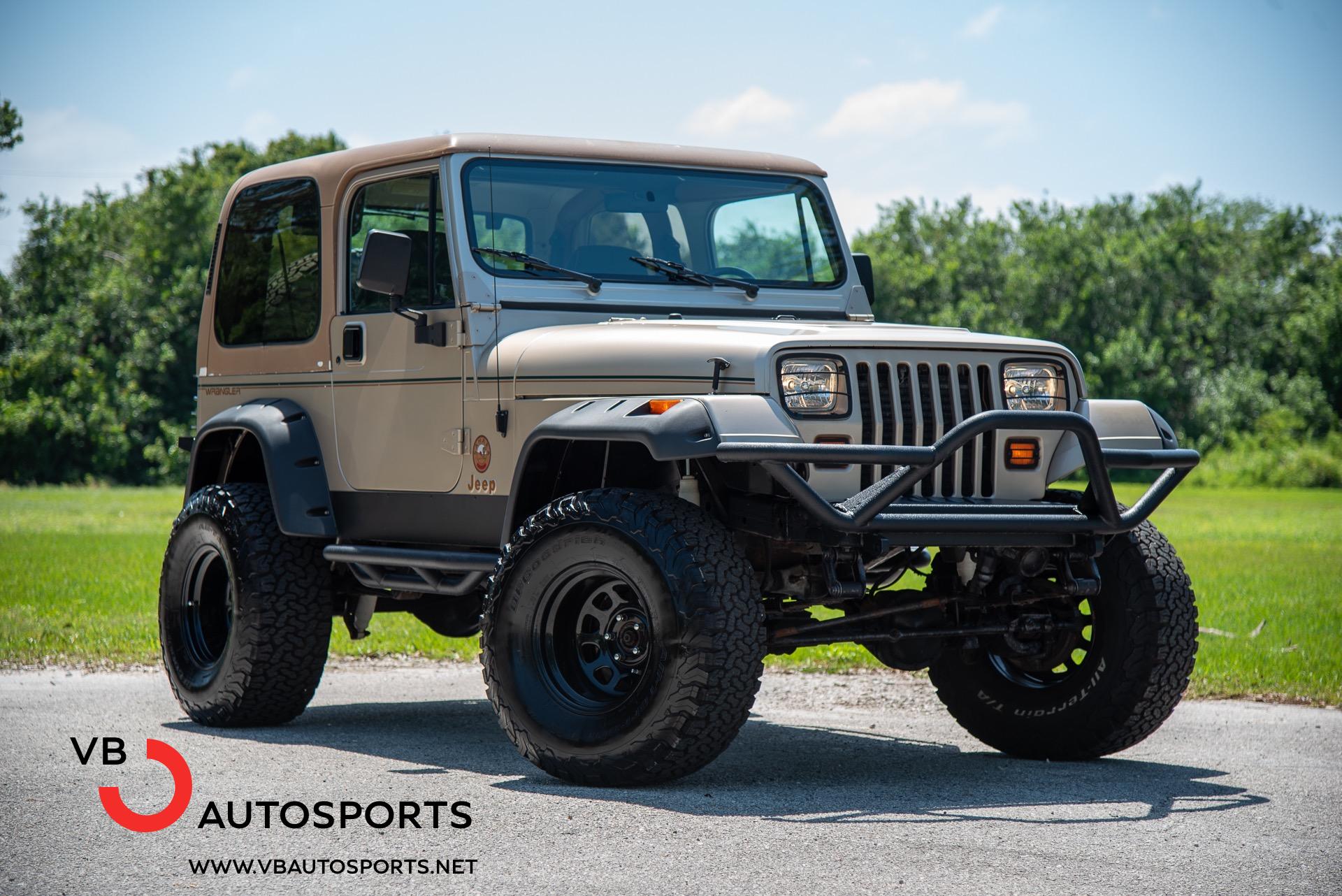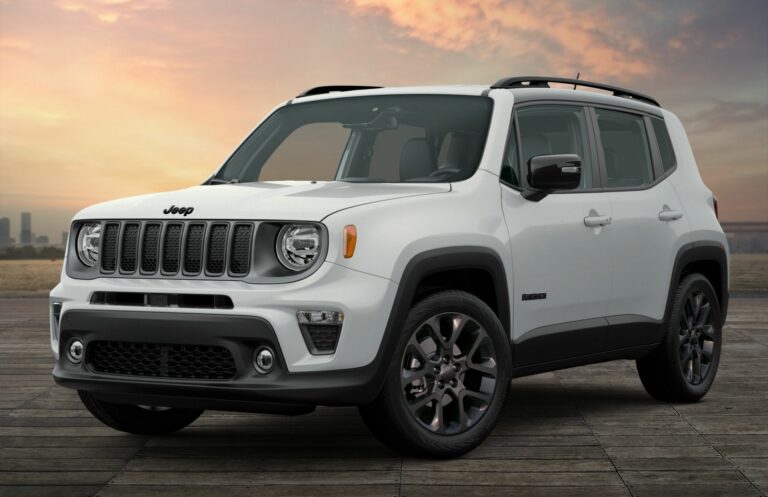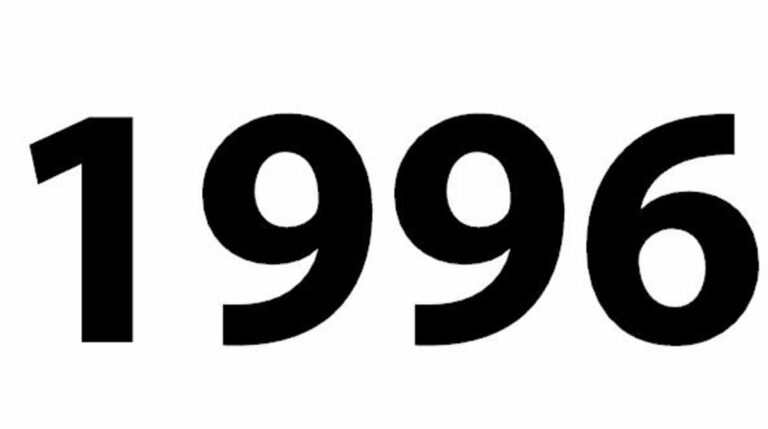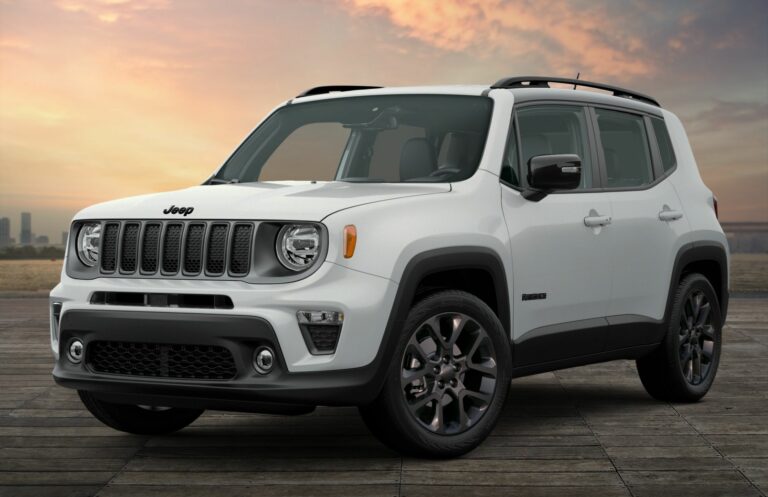1994 Jeep Sahara For Sale: Your Comprehensive Guide to Owning a Legend
1994 Jeep Sahara For Sale: Your Comprehensive Guide to Owning a Legend jeeps.truckstrend.com
The year 1994 might seem like a distant past for many, but for automotive enthusiasts, it marks a sweet spot, especially when it comes to the iconic Jeep Sahara. The 1994 Jeep Sahara, part of the legendary YJ generation, isn’t just a used vehicle; it’s a piece of American automotive history, a symbol of freedom, adventure, and rugged capability. With its distinctive square headlights, robust build, and the unmistakable Sahara trim package, it represents a unique blend of classic Jeep charm and surprisingly capable off-road prowess. Whether you’re a seasoned Jeeper looking to add a classic to your collection, an off-road enthusiast seeking a reliable trail rig, or simply someone yearning for a taste of open-air motoring, understanding the nuances of a 1994 Jeep Sahara for sale is crucial. This comprehensive guide will delve into everything you need to know, from its unique features to what to inspect before buying, ensuring you make an informed decision on your journey to owning this timeless machine.
Why the 1994 Jeep Sahara Stands Out
1994 Jeep Sahara For Sale: Your Comprehensive Guide to Owning a Legend
The 1994 Jeep Wrangler Sahara, known by its internal code YJ, holds a special place in the hearts of Jeep aficionados. It was the second-to-last model year for the YJ, meaning it benefited from most of the refinements and improvements made throughout the YJ’s production run. While purists often debate the square headlights (a departure from the round headlights of its CJ predecessors), the YJ introduced improved comfort and road manners without sacrificing its legendary off-road capability.
The Sahara trim level, in particular, was the top-tier offering, designed to be the more "luxurious" and aesthetically enhanced version of the Wrangler. Key features that set the 1994 Sahara apart include:
- Distinctive Exterior: Body-color fender flares, unique Sahara green or khaki paint options, special "Sahara" graphics and decals, and often a matching body-color hardtop.
- Enhanced Interior: Sahara-specific high-back bucket seats with unique fabric patterns (often with storage pockets on the seat backs), full carpeting, and an upgraded sound system for its time.
- Standard Features: Many features that were optional on other YJ trims, such as fog lights, chrome grille, and a spare tire cover, often came standard on the Sahara.
- Engine Options: The most desirable engine is the robust 4.0-liter AMC 242 inline-six cylinder engine, known for its incredible torque and legendary durability. A 2.5-liter four-cylinder engine was also available, offering better fuel economy but less power.
- Transmission Choices: Buyers could choose between a five-speed manual transmission (AX-15 for the 4.0L) or a three-speed automatic (32RH for the 4.0L). Both are solid options, with the manual offering more driver engagement and control, especially off-road.
- Suspension: Like all YJs, the 1994 Sahara featured leaf spring suspension at all four corners, providing a robust and relatively simple setup that’s excellent for articulation on trails, albeit with a stiffer ride on pavement compared to modern coil-sprung Jeeps.

These elements combine to create a vehicle that is not only highly capable but also possesses a unique aesthetic appeal that has only grown in popularity over time, making a well-preserved 1994 Jeep Sahara a coveted find.
What to Look For When Buying a 1994 Jeep Sahara
Acquiring a 1994 Jeep Sahara is an exciting prospect, but it requires a meticulous inspection. These vehicles are nearly three decades old, and their condition can vary wildly. A thorough pre-purchase inspection is paramount.

- Rust, Rust, Rust: This is the absolute biggest enemy of the YJ.
- Frame: Inspect the frame rails thoroughly, especially around the skid plates, body mounts, and the rear shackle mounts. Pay close attention to areas where the frame rails curve or meet crossmembers. Surface rust is common, but deep, flaky, or perforated rust is a deal-breaker.
- Body: Check the floor pans (under the carpet), rocker panels, wheel wells, tailgate hinges, and around the windshield frame. The cowl area, where the windshield meets the hood, is also prone to rust.
- Underbody: Look at the transmission crossmember, control arm mounts, and suspension components.

- Engine and Drivetrain:
- 4.0L I6: Listen for unusual noises (knocks, ticks), check for oil leaks (common areas: rear main seal, oil pan gasket, valve cover gasket). Ensure it starts easily and idles smoothly.
- 2.5L I4: Similar checks, though less common for major leaks.
- Transmission: Check fluid levels and condition. For manuals, ensure smooth shifting and no grinding. For automatics, check for harsh shifts or slipping.
- Transfer Case (NP231 or NP207): Engage 4×4 High and Low. Listen for grinding or clunking. Ensure the linkage engages properly.
- Axles: Check for differential leaks and unusual noises during a test drive.
- Suspension and Steering:
- Leaf Springs: Look for sagging or broken leaves.
- Bushings: Inspect all bushings (shackles, control arms) for cracks or deterioration.
- Steering: Check for excessive play in the steering wheel. Inspect the steering box for leaks and the tie rod ends/drag link for wear. A common YJ issue is "death wobble" – a violent shaking of the front end at speed, often caused by worn steering or suspension components.
- Shocks: Look for leaks.
- Interior Condition:
- Seats: Check the condition of the Sahara-specific fabric. Tears and fading are common.
- Floor: Lift the carpets to check for rust or water damage.
- Dash: Look for cracks, especially around the gauges. Ensure all gauges and warning lights work.
- Electrical: Test all lights, wipers, horn, radio, and HVAC controls.
- Exterior and Body:
- Paint: Inspect for fading, clear coat peel, significant scratches, or signs of poor previous bodywork.
- Soft Top/Hardtop: If a soft top is present, check for tears, faded windows, and functional zippers. If a hardtop, check for cracks and proper fitment.
- Doors: Check for proper alignment and operation. Door hinges are rust-prone.
- Original Sahara Decals: While not critical for function, intact original decals add to the vehicle’s authenticity and value.
- Documentation: Always ask for service records, receipts for parts, and a clean title. This provides insight into the vehicle’s history and how well it was maintained.
The Ownership Experience: Pros and Cons
Owning a 1994 Jeep Sahara is a unique experience, full of character and adventure.
Pros:
- Iconic Style: The square headlights, classic Jeep grille, and rugged stance make it instantly recognizable and a head-turner.
- Unrivaled Off-Road Capability: With solid axles, excellent approach/departure angles, and a low-range transfer case, it’s incredibly capable on trails, even in stock form.
- Strong Aftermarket Support: A vast array of aftermarket parts and accessories are available for YJs, allowing for endless customization and upgrades.
- Removable Tops and Doors: The ultimate open-air experience, perfect for summer cruising.
- Relatively Simple Mechanics: The 4.0L engine is renowned for its simplicity and reliability, making basic maintenance manageable for the DIY enthusiast.
- Potential for Appreciation: Well-maintained, original YJs, especially the Sahara trim, are starting to appreciate in value as classic vehicles.
Cons:
- Ride Quality: The leaf spring suspension can lead to a somewhat stiff and bouncy ride, especially on rough pavement. It’s not a luxury cruiser.
- Rust Susceptibility: As mentioned, rust is a constant battle, requiring vigilance and preventative measures.
- Fuel Economy: The 4.0L engine, while powerful, is not known for its fuel efficiency. Expect single-digit or low-teen MPG figures.
- Noise: With a soft top, wind and road noise can be significant. Even with a hardtop, it’s not a quiet cabin.
- Maintenance: While simple, it’s an older vehicle, so components will wear out and require regular attention.
Preparing Your 1994 Jeep Sahara for Sale (Seller’s Guide)
If you’re selling your 1994 Jeep Sahara, maximizing its appeal and value requires some strategic effort.
- Thorough Cleaning and Detailing: A clean Jeep sells better. Wash, wax, and detail the exterior. Vacuum and wipe down the interior, paying attention to the unique Sahara seats. Clean under the hood.
- Address Minor Issues: Fix any obvious, inexpensive problems like burnt-out bulbs, non-functioning wipers, or minor leaks. This shows potential buyers you’ve cared for the vehicle.
- Gather Documentation: Compile all service records, maintenance receipts, and the clean title. This builds trust and demonstrates the vehicle’s history.
- High-Quality Photography: Take clear, well-lit photos from multiple angles – exterior (front, back, sides, 3/4 views), interior, engine bay, undercarriage (if possible). Highlight unique Sahara features and any upgrades.
- Research Pricing: Look at comparable 1994 Jeep Sahara models for sale online (e.g., eBay, Bring a Trailer, specialty Jeep forums). Adjust your price based on condition, mileage, modifications, and originality.
- Craft a Detailed and Honest Ad: Be transparent about the vehicle’s condition, including any known flaws (e.g., minor rust, paint imperfections). Highlight its strengths (e.g., "new tires," "recently serviced," "no death wobble"). Mention if it’s been off-roaded and how extensively.
Financing and Insurance Considerations
Buying an older vehicle like a 1994 Jeep Sahara often involves different financing and insurance avenues.
- Financing: Traditional auto loans from banks might be difficult to secure for a vehicle of this age and value. Personal loans, credit union loans, or specialized classic car loans (if the vehicle is in exceptional, near-original condition) are more likely options. Be prepared to pay cash.
- Insurance: Standard auto insurance will cover it, but you might consider specialized classic car insurance if the vehicle is primarily a weekend driver or collectible, as these policies often offer agreed-value coverage (insuring it for a pre-determined amount, rather than depreciated market value).
1994 Jeep Sahara Estimated Price Guide
Please note that these are estimates and actual prices can vary significantly based on geographic location, specific modifications, originality, and current market demand. This table provides a general guideline for a 1994 Jeep Sahara with the 4.0L engine.
| Condition Category | Estimated Price Range (USD) | Key Characteristics & Notes |
| :—————– | :————————– | :——————————————————————————————————————————————————————————————————————————————————————————————————————————————————————————————————————————————————————————————————————————————————————————————————————————————————————————————————————————————————————————————————————————————————————————————————————————————————————————————————————————————————————————————————————————————————————————————————————————————————————————————————————————————————————————————————————————————————————————————————————————————————————————————————————————————————————————————————————————————————————————————————————————————————————————————————————————————————————————————————————————————————————————————————————————————————————————————————————————————————————————————————————————————————————————————————————————————————————————————————————————————————————————————————————————————————————————————————————————————————————————————————————————————————————————————————————————————————————————————————————————————————————————————————————————————————————————————————————————————————————————————————————————————————————————————————————————————————————————————————————————————————————————————————————————————————————————————————————————————————————————————————————————————————————————————————————————————————————————————————————————————————————————————————————————————————————————————————————————————————————————————————————————————————————————————————————————————————————————————————————————————————————————————————————————————————————————————————————————————————————————————————————————————————————————————————————————————————————————————————————————————————————————————————————————————————————————————————————————————————————————————————————————————————————————————————————————————————————————————————————————————————————————————————————————————————————————————————————————————————————————————————————————————————————————————————————————————————————————————————————————————————————————————————————————————————————————————————————————————————————————————————————————————————————————————————————————————————————————————————————————————————————————————————————————————————————————————————————————————————————————————————————————————————————————————————————————————————————————————————————————————————————————————————————————————————————————————————————————————————————————————————————————————————————————————————————————————————————————————————————————————————————————————————————————————————————————————————————————————————————————————————————————————————————————————————————————————————————————————————————————————————————————————————————————————————————————————————————————————————————————————————————————————————————————————————————————————————————————————————————————————————————————————————————————————————————————————————————————————————————————————————————————————————————————————————————————————————————————————————————————————————————————————————————————————————————————————————————————————————————————————————————————————————————————————————————————————————————————————————————————————————————————————————————————————————————————————————————————————————————————————————————————————————————————————————————————————————————————————————————————————————————————————————————————————————————————————————————————————————————————————————————————————————————————————————————————————————————————————————————————————————————————————————————————————————————————————————————————————————————————————————————————————————————————————————————————————————————————————————————————————————————————————————————————————————————————————————————————————————————————————————————————————————————————————————————————————————————————————————————————————————————————————————————————————————————————————————————————————————————————————————————————————————————————————————————————————————————————————————————————————————————————————————————————————————————————————————————————————————————————————————————————————————————————————————————————————————————————————————————————————————————————————————————————————————————————————————————————————————————————————————————————————————————————————————————————————————————————————————————————————————————————————————————————————————————————————————————————————————————————————————————————————————————————————————————————————————————————————————————————————————————————————————————————————————————————————————————————————————————————————————————————————————————————————————————————————————————————————————————————————————————————————————————————————————————————————————————————————————————————————————————————————————————————————————————————————————————————————————————————————————————————————————————————————————————————————————————————————————————————————————————————————————————————————————————————————————————————————————————————————————————————————————————————————————————————————————————————————————————————————————————————————————————————————————————————————————————————————————————————————————————————————————————————————————————————————————————————————————————————————————————————————————————————————————————————————————————————————————————————————————————————————————————————————————————————————————————————————————————————————————————————————————————————————————————————————————————————————————————————————————————————————————————————————————————————————————————————————————————————————————————————————————————————————————————————————————————————————————————————————————————————————————————————————————————————————————————————————————————————————————————————————————————————————————————————————————————————————————————————————————————————————————————————————————————————————————————————————————————————————————————————————————————————————————————————————————————————————————————————————————————————————————————————————————————————————————————————————————————————————————————————————————————————————————————————————————————————————————————————————————————————————————————————————————————————————————————————————————————————————————————————————————————————————————————————————————————————————————————————————————————————————————————————————————————————————————————————————————————————————————————————————————————————————————————————————————————————————————————————————————————————————————————————————————————————————————————————————————————————————————————————————————————————————————————————————————————————————————————————————————————————————————————————————————————————————————————————————————————————————————————————————————————————————————————————————————————————————————————————————————————————————————————————————————————————————————————————————————————————————————————————————————————————————————————————————————————————————————————————————————————————————————————————————————————————————————————————————————————————————————————————————————————————————————————————————————————————————————————————————————————————————————————————————————————————————————————————————————————————————————————————————————————————————————————————————————————————————————————————————————————————————————————————————————————————————————————————————————————————————————————————————————————————————————————————————————————————————————————————————————————————————————————————————————————————————————————————————————————————————————————————————————————————————————————————————————————————————————————————————————————————————————————————————————————————————————————————————————————————————————————————————————————————————————————————————————————————————————————————————————————————————————————————————————————————————————————————————————————————————————————————————————————————————————————————————————————————————————————————————————————————————————————————————————————————————————————————————————————————————————————————————————————————————————————————————————————————————————————————————————————————————————————————————————————————————————————————————————————————————————————————————————————————————————————————————————————————————————————————————————————————————————————————————————————————————————————————————————————————————————————————————————————————————————————————————————————————————————————————————————————————————————————————————————————————————————————————————————————————————————————————————————————————————————————————————————————————————————————————————————————————————————————————————————————————————————————————————————————————————————————————————————————————————————————————————————————————————————————————————————————————————————————————————————————————————————————————————————————————————————————————————————————————————————————————————————————————————————————————————————————————————————————————————————————————————————————————————————————————————————————————————————————————————————————————————————————————————————————————————————————————————————————————————————————————————————————————————————————————————————————————————————————————————————————————————————————————————————————————————————————————————————————————————————————————————————————————————————————————————————————————————————————————————————————————————————————————————————————————————————————————————————————————————————————————————————————————————————————————————————————————————————————————————————————————————————————————————————————————————————————————————————————————————————————————————————————————————————————————————————————————————————————————————————————————————————————————————————————————————————————————————————————————————————————————————————————————————————————————————————————————————————————————————————————————————————————————————————————————————————————————————————————————————————————————————————————————————————————————————————————————————————————————————————————————————————————————————————————————————————————————————————————————————————————————————————————————————————————————————————————————————————————————————————————————————————————————————————————————————————————————————————————————————————————————————————————————————————————————————————————————————————————————————————————————————————————————————————————————————————————————————————————————————————————————————————————————————————————————————————————————————————————————————————————————————————————————————————————————————————————————————————————————————————————————————————————————————————————————————————————————————————————————————————————————————————————————————————————————————————————————————————————————————————————————————————————————————————————————————————————————————————————————————————————————————————————————————————————————————————————————————————————————————————————————————————————————————————————————————————————————————————————————————————————————————————————————————————————————————————————————————————————————————————————————————————————————————————————————————————————————————————————————————————————————————————————————————————————————————————————————————————————————————————————————————————————————————————————————————————————————————————————————————————————————————————————————————————————————————————————————————————————————————————————————————————————————————————————————————————————————————————————————————————————————————————————————————————————————————————————————————————————————————————————————————————————————————————————————————————————————————————————————————————————————————————————————————————————————————————————————————————————————————————————————————————————————————————————————————————————————————————————————————————————————————————————————————————————————————————————————————————————————————————————————————————————————————————————————————————————————————————————————————————————————————————————————————————————————————————————————————————————————————————————————————————————————————————————————————————————————————————————————————————————————————————————————————————————————–, you’ve hit the jackpot. The market for clean, well-maintained YJs is strong, and a Sahara will always attract attention.
Conclusion
The 1994 Jeep Sahara stands as a testament to Jeep’s enduring legacy, offering a blend of classic charm, rugged capability, and unique styling that sets it apart. While buying an older vehicle always comes with its caveats, a well-inspected Sahara promises years of adventure and a strong connection to Jeep’s storied past. It’s more than just a car; it’s a lifestyle, a hobby, and for many, a lifelong passion. Approach your search with patience, diligence, and a keen eye for detail, and you’ll find that owning a piece of the YJ Sahara legend is a truly rewarding experience.
Frequently Asked Questions (FAQ)
Q1: Is the 1994 Jeep Sahara a good daily driver?
A1: It can be, but it depends on your expectations. Its leaf spring suspension provides a firm ride, fuel economy isn’t great, and it can be noisy, especially with a soft top. For short commutes or weekend adventures, it’s excellent, but for long highway trips, modern vehicles offer more comfort and refinement.
Q2: What’s the difference between the 2.5L and 4.0L engine?
A2: The 4.0L inline-six is significantly more powerful (180 hp vs. 123 hp) and offers much more torque, making it the preferred choice for off-roading, towing, or if you plan to run larger tires. The 2.5L four-cylinder is more fuel-efficient but can feel underpowered, especially on highways or inclines.
Q3: How much does insurance typically cost for a 1994 Jeep Sahara?
A3: Insurance costs vary widely based on your location, driving record, and coverage type. As an older vehicle, comprehensive and collision might be lower than for a new car. Consider specialized classic car insurance if it’s a collectible and not your primary vehicle, as it can offer better value and agreed-upon valuation.
Q4: Are parts readily available for a 1994 Jeep Sahara?
A4: Yes, absolutely! The YJ generation shares many common components with other Jeeps, and there’s a massive aftermarket industry. Most mechanical parts, body panels, and interior components are still widely available new or as used parts.
Q5: What is "death wobble" and how do I fix it?
A5: "Death wobble" is a violent, uncontrollable oscillation of the front wheels that can occur at certain speeds, usually after hitting a bump. It’s not unique to Jeeps but is commonly associated with solid front axle vehicles with worn steering or suspension components. Common culprits include worn tie rod ends, drag link, track bar, ball joints, wheel bearings, or improperly torqued suspension bolts. It’s crucial to address it immediately for safety; a qualified mechanic specializing in Jeeps can diagnose and fix it.
Q6: Can I legally take the doors off a 1994 Jeep Sahara?
A6: The legality of driving without doors varies by state and local regulations. In most states, it is legal as long as you have side mirrors (which may need to be relocated if they’re on the doors) and meet other safety requirements. Always check your local laws before driving without doors.






